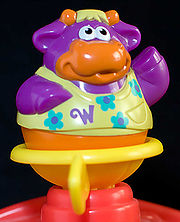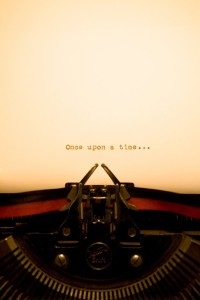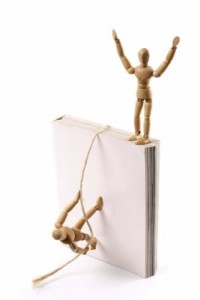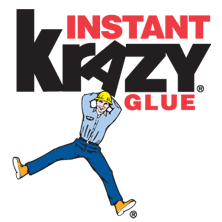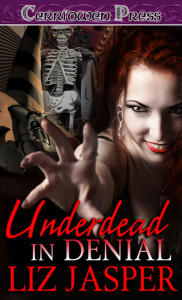How green is your book, Dracula?
Earlier this week Michelle Gagnon blogged about Internet promotion for authors. The fact that I’m guest blogging here today is a good illustration of another common type of internet promo: authors popping in on one another’s blogs to “meet” new readers. The fact that I’m mentioning this supports another of her very good points: that it’s a small world in the author community. I know two of the bloggers here at The Kill Zone–Kathryn Lilley invited me here today. (Nonetheless, I’m using Michelle’s name at the top of my blog because I’ve seen her shoot a Glock. Okay, it was at a gun range for a Sisters In Crime event, but still. Girl’s got aim.)
I am spending my promotional time guest blogging rather than Twittering (not that an author can’t do that simultaneously) or updating my MySpace and Facebook pages because I hate doing those things. Hold on did I type that out loud? Ahem. What I meant to write is that I’m a Go Green/Read-E (book) ambassador. Which means I’m blogging to help promote ebooks as an eco-conscious alternative to the traditional paper book format.
Being green is important. Especially if, like me, you live in the sort of city where if you forget to bring your own, reusable, organic ink, fair trade, recycled material grocery bags to the supermarket, the collective laser beam of guilt focused on you is so awful you find yourself buying a fresh new set of reusable bags. To add to the pile you have at home big enough to form into a meditation yurt in the backyard.
However, as I researched things like how many trees a reader would save if he/she read 20 books and two newspapers electronically (one tree a year, which adds up to a lot of forests given all the readers in the world) I ran across a study that had already done this. (If you’d like to run across it, too, head for: http://tinyurl.com/cwj86y
Fortunately, my native eco-sensitivity awarded me plenty of time to ponder what else I could blog about. I thought long and hard during my eighteen trips back and forth from car to kitchen to unload groceries. (“You’re out of reusable grocery bags? Someone’s been buying them all up? Who would do that? Of course I don’t want plastic ones. Just load everything back to the cart.”) And what I realized, during a break on trip ten to protect the Chunky Monkey by carefully siphoning off the melty bits with a soup spoon, what I really should be assessing is my own contribution to global warming. Forget the paper versus electronic publishing format debate. What about the book itself?
As an eco-conscious paranormal mystery writer, what I need to know is this: Are vampires bad for the environment?
Think about it. Unless they have the bad fortune to collide chest first with a sharp stake or (in my books) step out into a lovely, sunny, existence-ending day, they live forever. Longer than Styrofoam. Or Twinkies. Or broccoli on my niece’s plate (unless I happen to look away, in which case the stalks magically disappear in a puff of air that curiously also makes the light fixtures above the table swing…).
It seems pretty obvious Vampires take up more than their fair share of resources, don’t you think?
Well…
On the plus side, and this is a big plus they don’t eat human food. And if you ever read the statistics about what’s trashing our environment, the resources we use to grow food are a big part. There’s methane from cattle (a discreet way of saying cow farts) polluting our air, fertilizer polluting our streams, etc. etc. Major eco points for Dracula!
Also on the plus side, the undead don’t commute. Not in cars anyways. Granted any vampire worth his sex symbol status will own a nice set of wheels, but it’s not as if he’s stuck in rush-hour traffic every day. No vampire with the least bit of brains would spend an hour or two a day battling road rage on the freeway when he could just turn into a bat and fly where he needs to go. (I assume any technology that would allow him to drive a car during daylight hours could also be used to protect his batty little wings. Excuse me. Very sexy, uber-masculine man-vamp wings.)

This is sounding pretty good for a vampire’s carbon footprint, except for the fact that for most vampires, one person equals one meal. Tsk. Tsk. Really, vampires of the world, do you have any idea how much it takes to get a pretty young maiden to eighteen in this country? In purely financial terms, estimates range from $38,027 to $104,532. Do you know how many McDonald’s Happy Meals the average eighteen year old has eaten? I don’t, but I imagine it’s a lot. Let’s face it, puberty, is one long Fry Emergency. In cow farts alone, the cost of producing one young maiden must be astronomical. No wonder cow methane is such a big pollutant!
Clearly, vampires need to get on board with the eco message of Reduce, Reuse, Recycle. I know it will be hard–like telling a writer to lay off the chocolate near a deadline. But it’s important! Everyone must do their part. Including readers, especially, it seems, those who like vampire stories. Why not do your part to help the planet and make you next book an ebook!
You can find Liz Jasper’s Underdead mysteries and thousands of other eBooks on-line at www.allromanceebooks.com.



